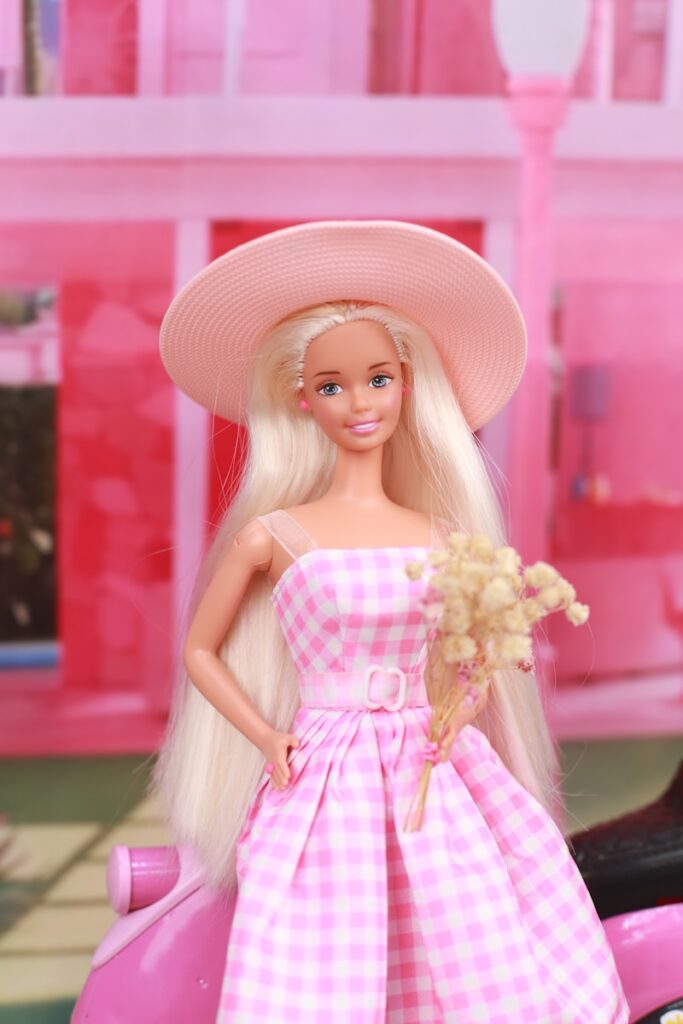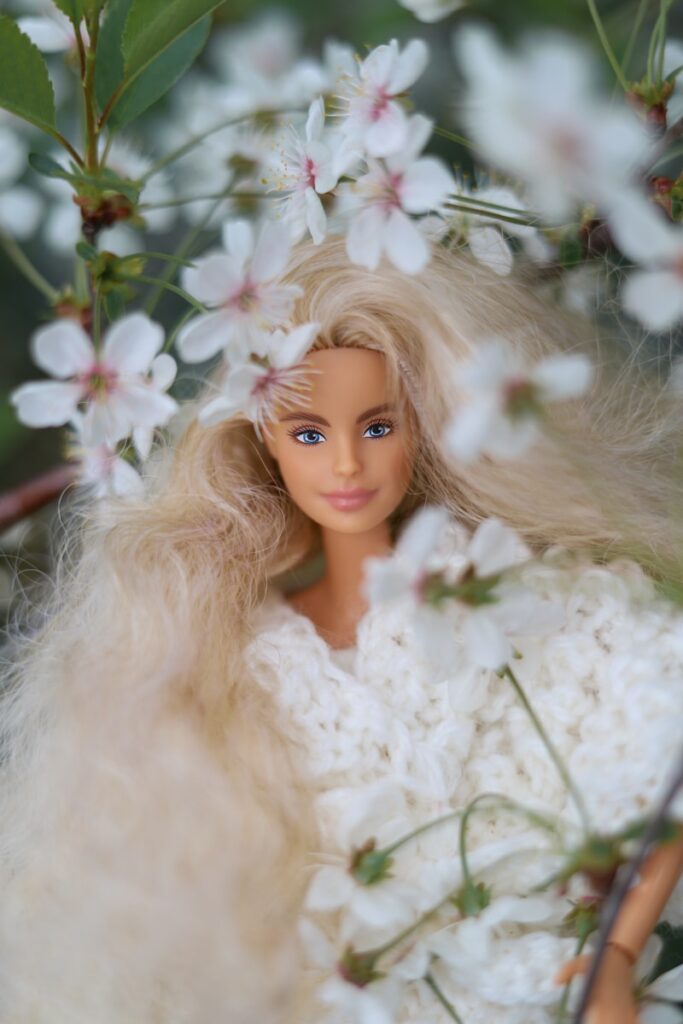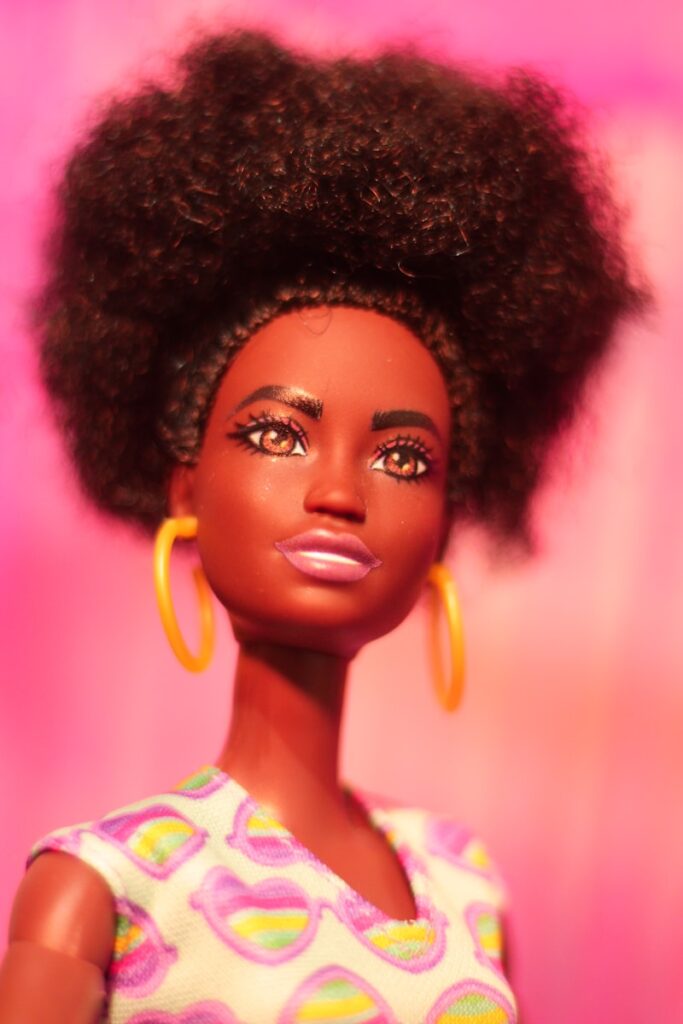Welcome to a journey into a world that is at times synthetic, at times deeply human, and always compelling: the world of Barbie and her unexpected intersections with modern life and technology. Barbie, the iconic doll introduced over six decades ago, has been more than just a childhood toy. She has shaped early perceptions, influenced imagination, and, perhaps most remarkably, become a reflection of evolving societal values.
Barbie’s influence now extends far beyond the toy aisle. She plays a role in critical conversations about representation, self-image, and identity. Today, Barbie is no longer a singular symbol of unattainable perfection but has transformed into a platform for diversity and inclusion, allowing children to see themselves reflected in their toys.
At the same time, the ideal she once represented continues to spark complex real-world reactions. For some, Barbie’s image has inspired dramatic transformations in the pursuit of a so-called ‘Human Barbie’ look—often involving years of physical alterations and substantial financial investment. These cases highlight the doll’s extraordinary cultural power and raise important questions about beauty standards and personal identity.
Barbie also exists at the intersection of physical and digital realities. As technology evolves, people are increasingly using digital tools to recreate and reimagine Barbie-like versions of themselves, blurring the line between fiction and self-perception.
As we delve into these stories, we uncover more than just the legacy of a toy. We begin to understand how deeply a simple doll can shape our perceptions, aspirations, and even our technological imagination. Barbie is no longer just a plaything—she is a mirror held up to society, capturing both its aspirations and its contradictions.
Barbie with Type 1 Diabetes Brings Representation to Childhood Play
A new Barbie doll is making a meaningful impact by offering visibility to children living with type 1 diabetes (T1D). This chronic autoimmune condition, often diagnosed in early life, presents a complex range of medical and social challenges. For many children, understanding their own diagnosis is already difficult—explaining it to others can be even more overwhelming.
This latest addition to the Barbie line, the first doll designed to represent a child living with T1D, responds to a very real need. Through play, children explore the world around them and make sense of their experiences. When those experiences include daily insulin management, strict dietary monitoring, and medical routines, having a toy that reflects their reality becomes incredibly important.
An estimated 1.8 million young people under the age of 20 are living with T1D. For these individuals, their condition means the pancreas produces little or no insulin, requiring constant care and attention. This new Barbie serves not only as a tool for empathy and inclusion but also as a way for children with T1D to feel recognized and validated.
By incorporating this condition into the world of play, the doll encourages greater awareness and fosters understanding—both among children who manage T1D and among their peers. It represents a significant step forward in inclusive toy design, where all children can see themselves and their health journeys reflected in the toys they cherish.
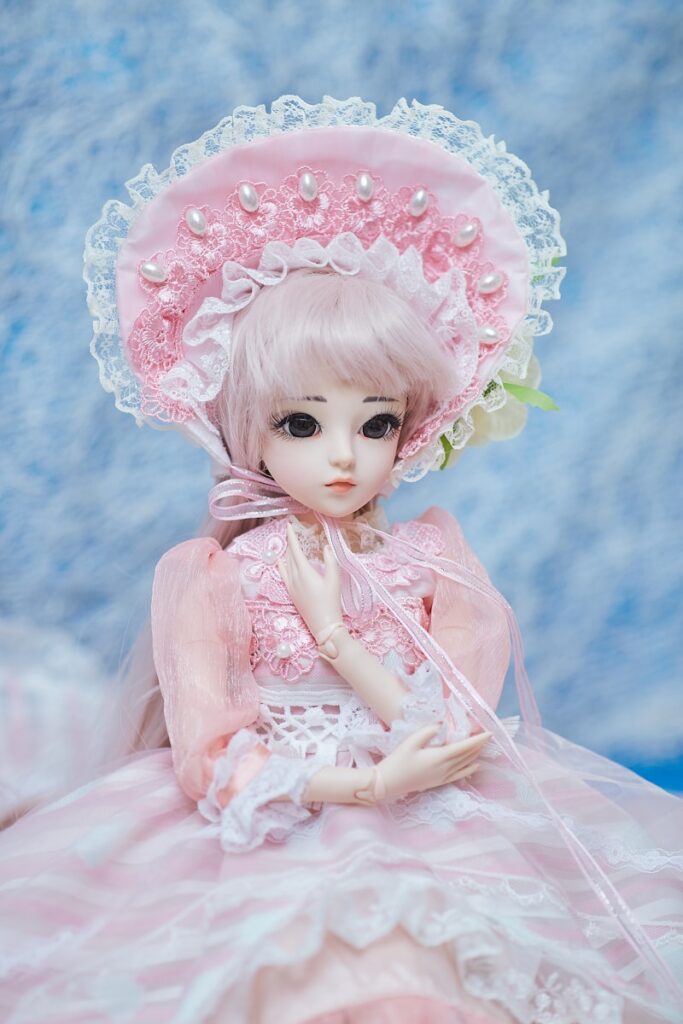
Barbie Partners with Breakthrough T1D to Deliver Authentic Diabetes Representation
Creating a doll that authentically reflects a medical condition requires thoughtful research and sensitivity. Barbie has taken this responsibility seriously by collaborating with Breakthrough T1D, a leading organization focused on research and advocacy for type 1 diabetes. This partnership was essential to ensure the doll accurately represents the lived experiences of those in the T1D community, incorporating important details that reflect the realities of daily management.
The result is a doll that feels both credible and meaningful. She comes equipped with a continuous glucose monitor (CGM), a small wearable sensor inserted under the skin that tracks blood glucose levels in real time. She also wears an insulin pump, a device that delivers measured doses of insulin as needed throughout the day. These accessories are not merely decorative; they mirror the actual tools many children use to manage their condition.
Even the doll’s outfit reflects an understanding of diabetes awareness. She wears a blue dress patterned with light blue circles—symbols internationally recognized in support of diabetes. The inclusion of a purse is also purposeful, acknowledging that individuals with T1D often carry testing supplies or snacks to regulate their blood sugar levels.
This level of attention to detail, guided by expert input and the lived experiences of people with T1D, ensures that the representation is both respectful and empowering. It allows children to see their health journey reflected in a familiar figure, helping to normalize the condition and foster empathy among peers.
The Emotional Reality Behind Britain’s ‘Oldest Human Barbie’
Shifting perspectives, we enter the complex and deeply personal world of individuals who seek to physically resemble dolls. One notable figure is Rachel Evans, a 53-year-old woman from South London, who has become widely recognized as “Britain’s oldest human Barbie.” Over the years, Rachel has spoken openly about her long journey with cosmetic enhancement, revealing the extent of her financial and emotional investment in altering her appearance to reflect the globally recognized Barbie image.
Her transformation was not merely a pursuit of beauty. For Rachel, it represented a form of emotional expression and personal healing. She disclosed that the devastating loss of her mother to cancer and her twin sister to suicide profoundly influenced her decision to undergo extensive cosmetic procedures. In her own words, she described the process as a way to “hide behind her face,” suggesting that the physical changes served as a protective layer during an overwhelming period of grief.
Rachel’s story offers insight into how external transformation can be deeply connected to internal struggles. Her experience underscores the role that aesthetic ideals, particularly those shaped by cultural icons like Barbie, can play in personal narratives of loss, identity, and recovery. Rather than a superficial pursuit, her journey reflects a search for control and emotional resilience in the aftermath of trauma.
A Price for Perfection: Inside Rachel Evans’ £32,000 Transformation into a Human Barbie
The extent of Rachel Evans’ transformation is remarkable in both scale and intent. Over the past 13 years, she estimates spending more than £32,000 on approximately 150 cosmetic procedures and treatments, all aimed at achieving her vision of the ideal “plastic Barbie” appearance. Her desired aesthetic emphasized exaggerated features, including fuller lips, enhanced cheeks, and a face free from wrinkles. Reflecting on this journey, she has acknowledged that she may have gone “a little too far” in pursuit of this highly stylized look.
Her decision to begin cosmetic enhancement was initially influenced by comments from others who remarked on her resemblance to Barbie. These observations, made when she was in her mid-30s, seemed to affirm a path that would grow increasingly intentional. What began with a few enhancements gradually intensified into a long-term commitment to a highly specific image.
Rachel has also linked the origins of her transformation to a period of personal grief and self-reflection. Following therapy after the stillbirth of her twin babies, she felt compelled to leave behind her former gothic appearance, which she associated with death and mourning. This emotional shift marked the beginning of her aesthetic reinvention, starting with botox and evolving into a broader pursuit of what she describes as the “Barbie plastic fantastic wrinkle-free look.”
Her story highlights the emotional complexity that often underlies extreme aesthetic transformations. It illustrates how personal loss, societal feedback, and cultural ideals can converge, shaping a deeply committed, and costly, pursuit of identity through physical change.

From Goth to Barbie: Rachel Evans’ Evolving Journey of Self-Expression
Rachel Evans’ transformation into the iconic “Human Barbie” was preceded by a diverse history of self-expression. In her late teens, she identified as a goth, favoring predominantly black clothing, dramatic dark makeup, and dyed black hair. She described this period as an experimental phase common among teenagers and also recalled a tomboy stage during which she wore men’s suits. Her deliberate shift toward the Barbie aesthetic began at age 35, following these earlier explorations of identity and style. This history reveals how altering her appearance has long served as a means of coping and personal expression.
Recently, Rachel has chosen to move away from the extreme “plastic Barbie” look that defined her appearance throughout her 30s and 40s. Inspired by Margot Robbie’s portrayal of Barbie in the 2023 film, she is now embracing a more natural aesthetic. Rachel regards this change as an evolution, reflecting the broader transformation of the Barbie brand itself, which has increasingly celebrated diverse body types, skin tones, and styles. She expressed that it was time to “move with the times” and adopt a look that aligns with this inclusivity.
Her decision was influenced in part by her best friend, whom she affectionately calls her “real life Ken.” Concerned that Rachel’s lips appeared excessively large and her cheeks overly augmented, he encouraged her to scale back certain procedures. Rachel welcomed this advice as an opportunity to “promote a better message in the media,” signaling a new chapter in her ongoing journey of self-reinvention.

Barbie and the Evolution of Representation: A Milestone in Inclusivity
Barbie’s history extends far beyond fashion and play; it reflects significant societal progress and evolving ideas of representation. The debut of the first Black Barbie in 1980 marked a landmark moment. Prior to this, while Black dolls such as Christie and Cara existed, they were presented as separate characters, distinct from Barbie herself. Introducing a Black doll as Barbie sent a powerful message, as actress and producer Ashley Blaine Featherson-Jenkins emphasized: “Black is beautiful too.”
This important development was not accidental but the result of intentional advocacy within Mattel. Ruth Handler, Barbie’s creator and a formidable leader, fostered a dialogue about inclusivity. She engaged women involved in production, including Beulah Mae Mitchell and Kitty Black Perkins, the designer of the first Black Barbie, seeking their insights. Their response was clear and transformative: “Make us, too.” This simple yet profound demand triggered a turning point in the toy industry, expanding the definition of Barbie and promoting diversity.
Having explored Barbie’s strides toward inclusivity and the complex human desire to embody doll-like aesthetics, it is essential to consider what this signifies. Beyond plastic figures and individual choices, the representation—or its absence—shapes how we perceive ourselves and the world from a young age. Its impact resonates deeply, influencing our core sense of identity.
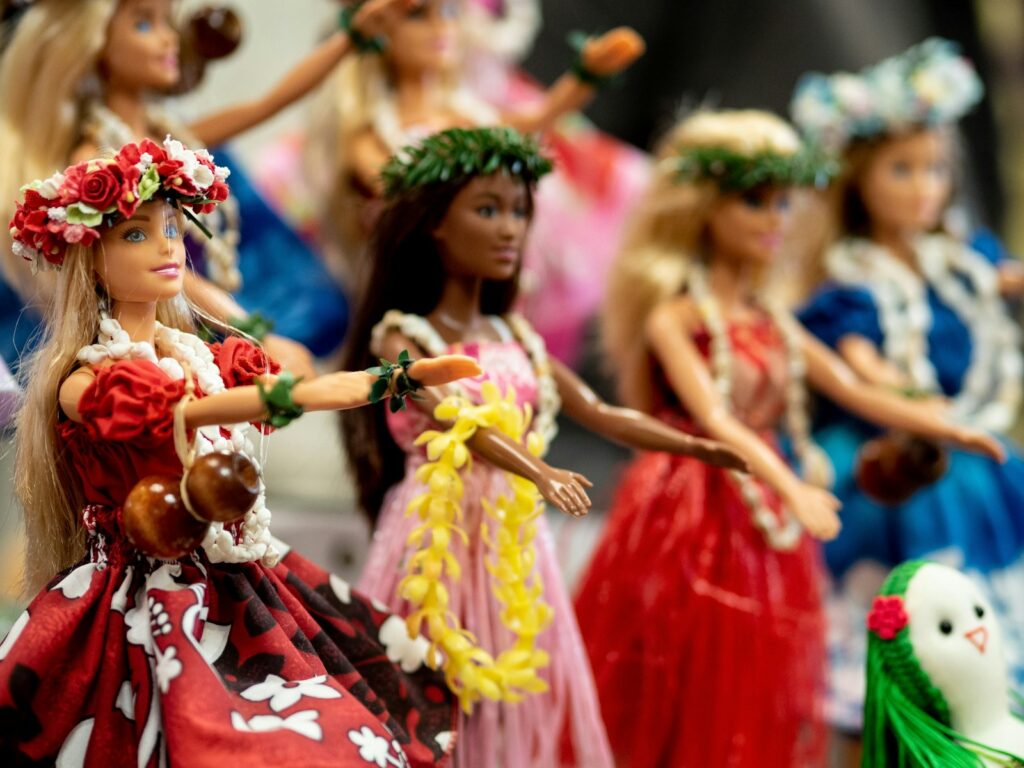
The Subtle Impact of Representation in Childhood Play
The feeling of wonder experienced as a child in a toy store, surrounded by endless possibilities, is familiar to many. For author Mia Brabham Nolan, this simple moment of choosing a doll carried unexpected significance. As she walked past the trucks and approached the wall of pink dolls, she recalled the sensation of being observed, as if others were watching what she would do next.
Even at a young age, Mia found herself drawn to the dolls that resembled the majority of those she saw at school, on television, and in her friends’ homes. These were the white dolls. Surrounded by rows of toys, she later recognized that she had never considered selecting a doll that reflected her own appearance. This unconscious choice, shaped by the external world beyond her home, left a profound and lasting impression.
The Unspoken Lessons Behind Childhood Choices
Mia Brabham Nolan acknowledges that she has often hesitated to share this memory due to the common reactions of judgment or disbelief. People frequently ask, shocked, “How could you choose that doll?” Yet Mia believes the real question should be, “What influenced me to make that choice in the first place?” She realized that her decision was not unusual but reflected the subtle, pervasive messages absorbed from the world around her.
The underlying story she was unconsciously taught outside her loving home suggested that although she existed, she was not the central figure. She was not the heroine or protagonist, but rather an option—perhaps not anyone’s first choice—in the broader narrative of the world she observed. This insight underscores how external representation, even in something as seemingly simple as a doll, profoundly shapes a child’s sense of belonging and self-worth.
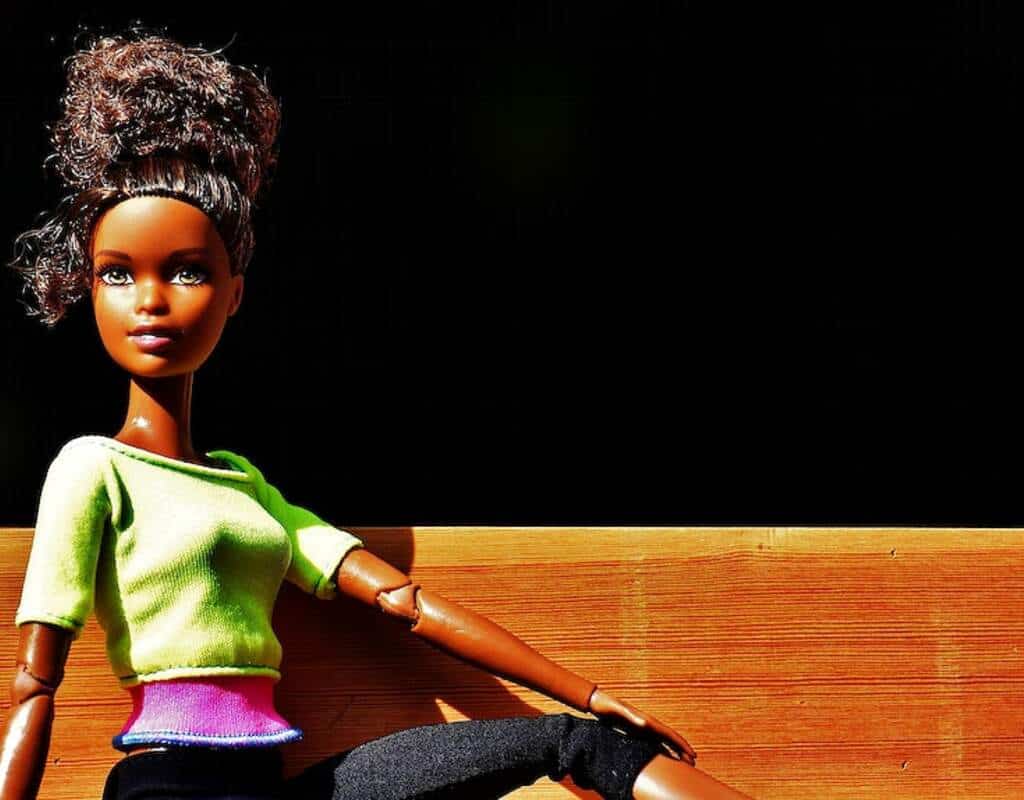
Validation Through Representation: The Impact of Black Barbie
Finding validation for such a deeply personal experience can be profoundly empowering. For Mia, this validation arrived partly through the Shondaland documentary Black Barbie, written and directed by Lagueria Davis. The film opens with actress and entrepreneur Julissa Calderon asking, “What do you think of when you hear ‘Barbie’?” Calderon describes a “little white doll with blue eyes and blonde hair and pink lips,” a portrayal that echoed Mia’s early perceptions.
Calderon highlights the essential issue, stating, “Everything that you conceive to be true or not true… you learn as a child. And if these Barbies are not representative of what our real reality looks like, then what are you really saying to these kids?” Executive producer Shonda Rhimes offers a powerful reflection, declaring, “If you’ve gone your whole life and never seen anything made in your own image… there is damage done.” Mia recalls gasping at these words, recognizing them as the validation and explanation she had long sought, succinctly capturing the lasting impact of her childhood experience.
The Historic Birth of the First Black Barbie: A Milestone in Representation
The introduction of the first Black Barbie in 1980 was far more than an addition to the toy collection; it represented a deliberate response to advocacy and an urgent need for representation. Prior to this, Black dolls such as Christie and Cara existed but were distinctly categorized as separate characters from the main Barbie brand.
This transformative development resulted from important discussions within Mattel, led by Barbie’s creator Ruth Handler. She actively sought insights from women involved in the production process, including early employee Beulah Mae Mitchell and Kitty Black Perkins, the designer of the first Black Barbie. When asked for their perspectives on what should be done, their response was clear and powerful: “Make us, too.” This simple yet profound demand from women working on the production lines sparked a crucial shift, paving the way for Mattel to embrace change and offer children dolls that more accurately reflect the diversity of the world around them.

Beyond Diversity: The Ongoing Challenges Facing Inclusive Barbies
The creation of dolls representing diverse identities marked significant progress, yet the journey continues. Inclusive Barbies now encompass nearly every shade, shape, and size; they are curvy, strong, wear hijabs, and even use wheelchairs. Despite this expansion, these dolls have not always received widespread acceptance.
Since their introduction, many of these dolls have suffered from minimal marketing support. In some instances, they have been refused sale or outright banned. Compounding the issue, as recently as 2014, reports revealed that some retailers charged different prices for Black and white Barbies. This situation underscores that the challenge is not only about producing diverse dolls but also about ensuring they receive equal visibility, accessibility, and respect in the marketplace. The struggle for societal acceptance and equitable treatment remains a vital and ongoing effort.

From Dolls to Digital Doppelgängers: How Representation Evolves in the Age of AI
Shifting from plastic dolls to digital pixels, a viral trend on TikTok and Instagram is captivating audiences by transforming pets into human doppelgängers using AI technology. This innovative phenomenon offers a fascinating glimpse of what beloved furry or scaly companions might look like as people.
The trend employs AI tools such as ChatGPT to bring this concept to life. Users upload a clear, high-quality photo of their pet and provide a prompt like, “What would my male/female dog look like as a person?” The experience is often enhanced by follow-up questions from the AI about the pet’s personality traits—playful, serious, relaxed, protective—as well as their age, unique quirks, and imagined human style, whether sporty, artistic, rugged, or elegant. The more detailed the input, the more accurately the AI crafts a human image that reflects the pet’s distinctive essence. This playful digital experiment reflects a broader human desire to see familiar qualities mirrored back to us, even through a virtual lens.
Whether through the evolving design of dolls or the surprising digital reimagination of pets, the ways we create and engage with representations of ourselves and the world continue to advance. From demanding inclusivity in toys to exploring AI-driven transformations, the impulse to be seen and understood in the reflections we encounter remains a powerful and enduring force. This ongoing evolution is undeniably one of the most intriguing developments in how we express identity and connection.


